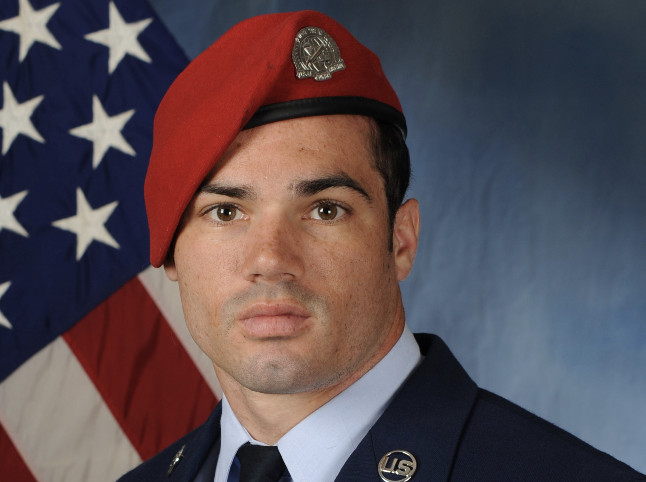An Air Force Special Tactics combat controller died when his improperly packed reserve parachute inadvertently deployed into the wind stream outside an MC-130H before a training jump, pulling him from the aircraft, according to an Air Force investigation.
Staff Sgt. Cole Condiff, 29, a Special Tactics combat controller from the 23rd Special Tactics Squadron at Hurlburt Field, Fla., was declared dead following a 17-day search in the Gulf of Mexico that failed to recover his remains.
On Nov. 5, 2019, Condiff was serving as the jumpmaster for a static-line parachute jump training event as part of the 24th Special Operations Wing’s first Special Tactics Rodeo in more than 20 years. The rodeo was a competition in which six special tactics teams came together for a series of training exercises and competitions at Hurlburt.
For the jump competition, all six teams piled into an MC-130H to see which team could have the shortest amount of time from when their first jumper left the aircraft to when their last jumper would land at the Air Commando drop zone. The teams all jumped during the first sortie, and climbed back into the aircraft for a second sortie.
During the second flight, three teams were able to jump and Condiff directed the next jumpers to get ready. According to the investigation, he then leaned out of the aircraft to possibly see beyond a wind deflector door, and leaned back into the plane. At this point, his T-11R parachute ripcord assembly, which video footage of the event showed was sticking out about one inch from its pocket, was exposed to winds outside the aircraft. The pressure from the winds caused the ripcord assembly to fail to hold the internal spring-loaded extractor in place, which then caught the wind and pulled the parachute out of its container.
The force of the deployed parachute pulled Condiff into and then around the aft frame of the aircraft’s right paratroop door. Once he was pulled away from the aircraft and its static line, Condiff’s main MC-6 parachute deployed as designed.
The incident caused a large bang, and quickly the aircraft’s loadmaster saw that Condiff was no longer in the doorframe, radioed that there was a “towed jumper.” Looking out the doorframe, the loadmaster then saw Condiff in the air suspended under two parachutes, and in turn made a correcting radio call that Condiff was not being towed, that he was out of the aircraft, and the aircraft’s navigator marked the plane’s position in the mission computer.
The aircraft’s pilot then notified Hurlburt’s tower of the problem, and turned back toward where the incident happened to start the search. An extensive search began, with an Air Force support boat finding parts of Condiff’s parachute about an hour and a half after the incident. The search went on for 17 days, with several agencies, boats, and aircraft participating but still unable to locate Condiff.
The Air Force Accident Investigation Board determined that Condiff’s parachute was improperly configured, a “direct result of the participating jumpmasters’ insufficient procedural knowledge,” according to Air Force Special Operations Command. The board also found “widespread misunderstanding” of the requirements for safe static-line parachute operations, a training deficiency within the 24th Special Operations Wing.
The incident occurred shortly after another special tactics Airman, Tech. Sgt. Peter Kraines, died during a climbing training incident in Idaho. After these deaths, AFSOC Commander Lt. Gen. James C. Slife directed a suspension of parachute, dive, and mountaineering training in the command. In this review, AFSOC identified problems with in-garrison training practices and standards.
“It is apparent that these losses are a tragic consequence of a culture shaped by the demands of the last 20 years,” Slife said in a release. “Across AFSOC, we normalized a culture overly focused on mission accomplishment, causing a lapse in training rigor, strict adherence to standards, and vigorous oversight of high-risk activities at all command echelons.”
